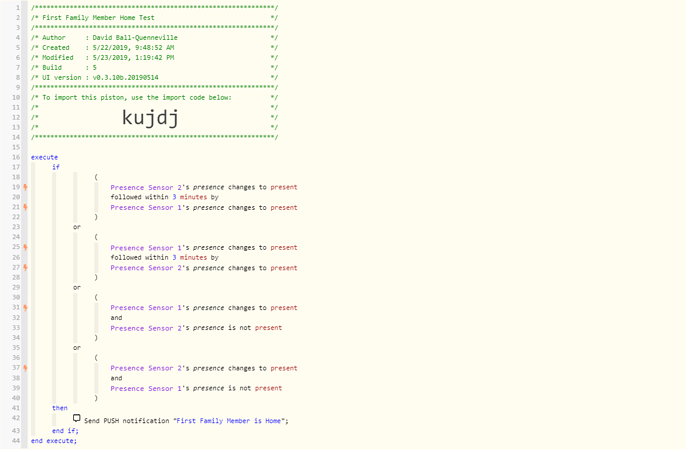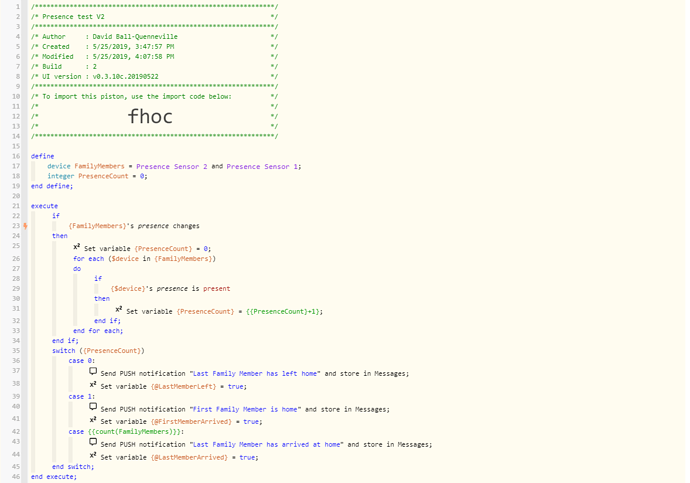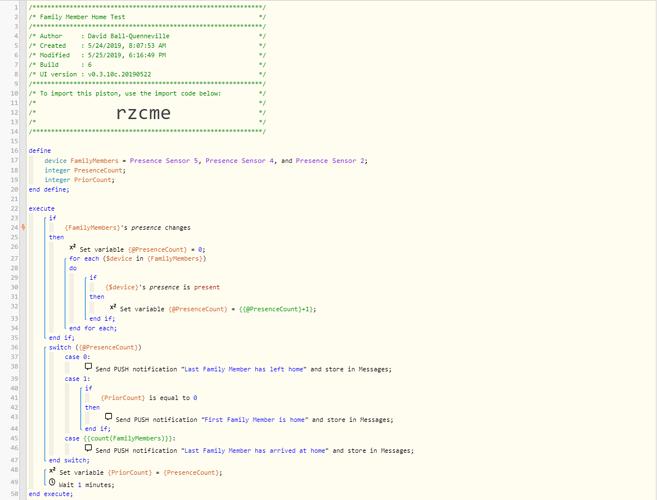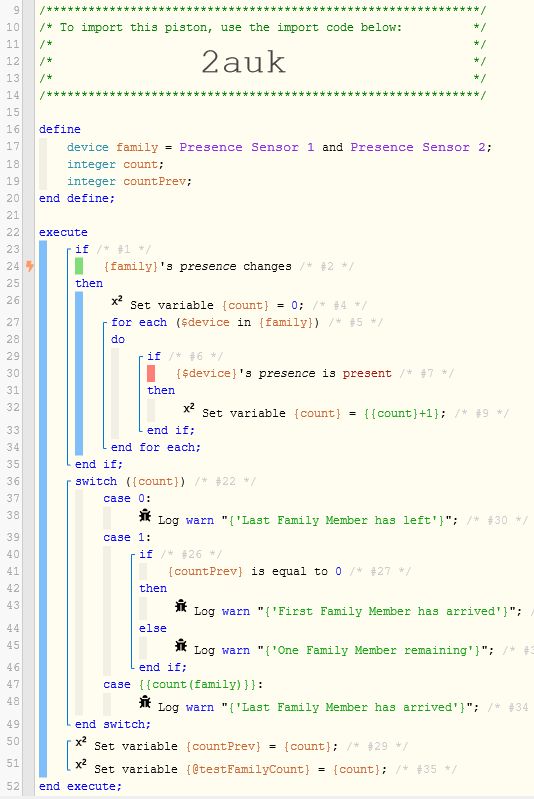1) Give a description of the problem
I have added Life360 presence in Smarthings IDE and configured it with the Life360 Circle, Life360 Places and Life360 Users. Our names now show up correctly in Webcore to be used in a condition.
The presence indicator from Life360 into Webcor is working correctly for each individual as I can setup pistons to change a variable based on when each person comes and goes. This is working correctly as I have tested it.
I am trying to create three pistons that execute based on:
- First Family Member to Arrive at home (we both arrive together or if no one is already home)
- Last Family Member to Leave at home (If the other member has already left)
- Last Family Member to Arrive at home (Even if the other member is already home.)
With these I wanted to change the value of a Global Variable, that I would use to execute pistons when the change occurs. I was going to use a Boolean Variable for each.
However I a not quite clear on the best logical approach to use. I would appreciate some guidance please.
2) What is the expected behaviour?
As a test I wrote the piston below, for #1 First Family Member to Arrive at home. Unfortunately, it did not work correctly. As I was home and then later the second member came home but the message still appeared.
3) What is happening/not happening?
The message still appeared but should not have.
**4) Post a Green Snapshot of the piston Attach logs after turning logging level to Full
(PASTE YOUR LOGS HERE THEN HIGHLIGHT ALL OF THE LOGS AND CLICK ON THE </> ICON TO FORMAT THEM CORRECTLY)
REMOVE BELOW AFTER READING
If a solution is found for your question then please mark the post as the solution.





